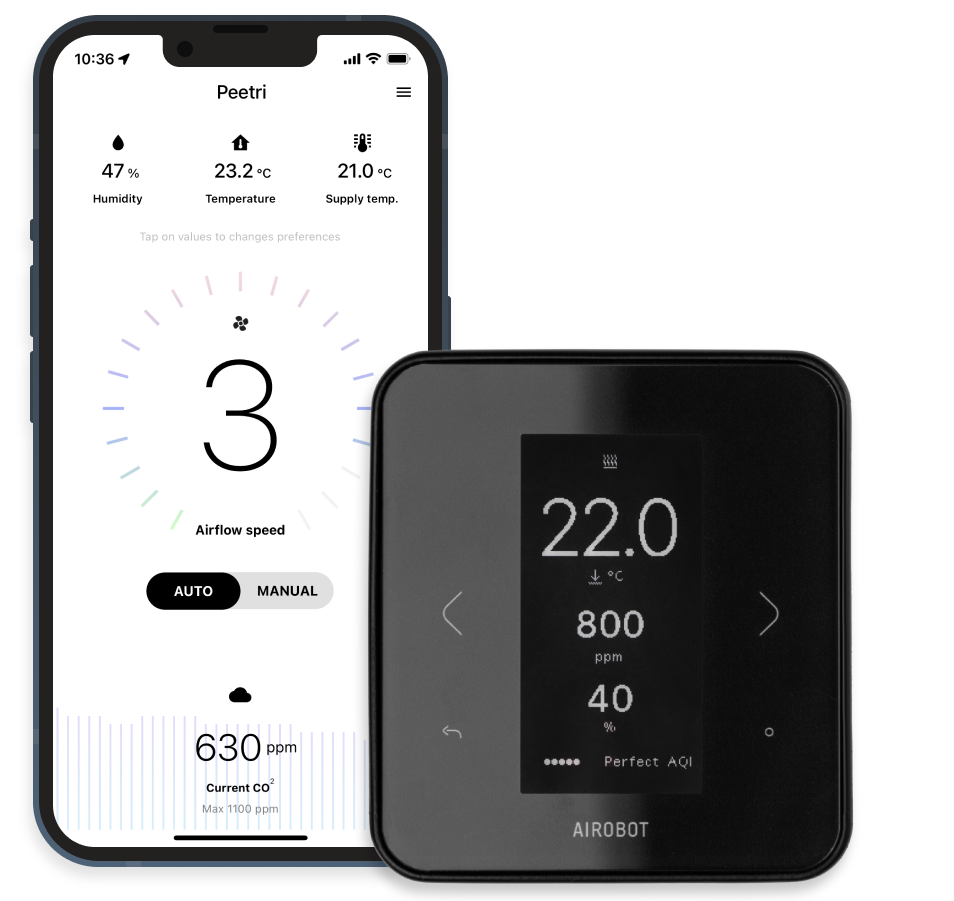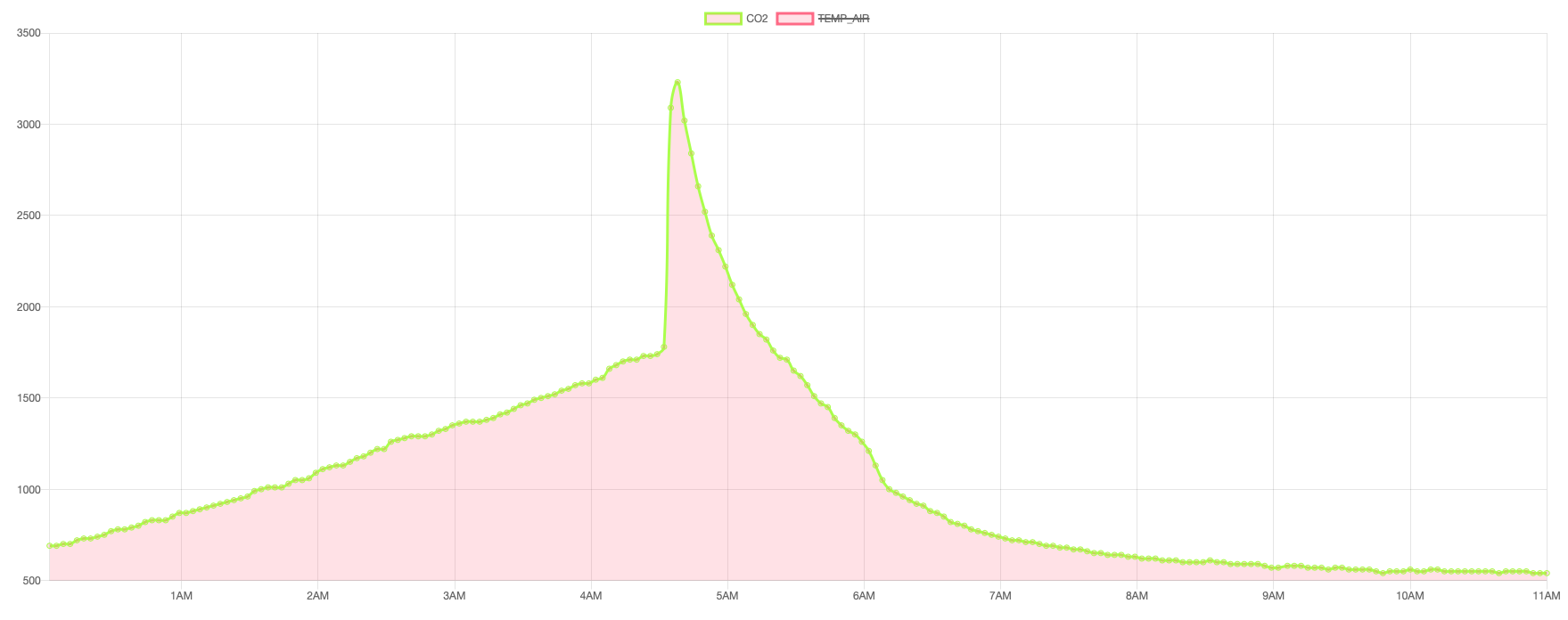What happens to the air quality in your bedroom if you don’t have ventilation in your home?
Ventilation equipment has become an integral part of modern homes. If the air in a home is of more or less okay then you may not even be aware that the ventilation system is working. But what happens when the ventilation system is switched off?
At Airobot, we recently launched floor heating thermostats that also measure the air quality in each room separately. Naturally, we came up with a few ideas to test with the CO2 sensors inside these thermostats. One of the things we wanted to find out was how bad the air quality in the bedroom gets, but to turn the ventilation off at night.
Although we used our very accurate floor heating thermostat sensors to measure air quality, this test has no scientific basis. This experiment is born out of our human curiosity and conducted purely for the entertainment of our collective. However, as the results were somewhat surprising, we decided to share them with our followers. mõnevõrra üllatavad, siis otsustasime neid jagada ka meie jälgijatega.

We wanted to find out how bad the air quality is going to get
It’s pretty clear that when you turn off the ventilation, the CO2 levels start to rise. But how quickly and by how much? After some persuasion, Airobot’s CTO, Gert, decided to take matters into his own hands. It was an unpleasant experiment for him, as Gert is one of the biggest air nerds (in the best sense of the word) who can spend hours explaining air quality issues.
What are the conditions of our human experiment?
Gert elab alles valminud uusarenduses, mis tema enda sõnul on hermeetiliselt suletud kilukarp. Õhk ei pääse ilma ventilatsiooniseadme abita kuskilt otsast sisse ega välja.
Bedroom volume: 40 cubic metres.
Number of people: 2
Measuring device: Airobot’s smart underfloor heating thermostat.
Ventilation device: Airobot L humidity- and heat-recvoery ventilation unit.
What we measured: Carbon dioxide (CO2) levels
Although our ventilation equipment also measures CO2, humidity and VOC levels, the ventilation equipment’s sensors receive the ‘aggregate’ air from all rooms in the home. We wanted to understand what happens in a sealed room with 2 people sleeping in it, and our water floor heating thermostat, with built-in CO2 and humidity sensors, is perfect for this test.

Without the ventilation unit, CO2 levels rose consistently.
You don’t need to be a ventilation expert to reach this conclusion. People produce CO2 even when they are asleep, and if you close the door and turn off the ventilation, it stands to reason that CO2 levels will rise.
Gert turned off the ventilation at 23:00 and went to bed. In the graph below (which starts at 00:00) you can see how the CO2 level rose steadily until it reached 1700 ppm (parts per million) at 4:30. To put it mildly, this was not a true CO2 reading and the situation was actually much worse. Since by this time Gert could no longer sleep in the bedroom, as high CO2 levels seriously disturb the quality of sleep, he turned the ventilation unit back on.

When the ventilation was switched on, the Airobot’s thermostat sensor immediately registered a staggering 3200 ppm (parts per million) CO2 reading. For humans, normal CO2 levels range between 400 and 800 ppm.
From the graph, we can also see that Airobot’s ventilation system was able to bring CO2 levels down quite quickly. Gert woke up again at 6am and left the bedroom, which in turn brought CO2 levels down very sharply.
Why did the CO2 level rise after the ventilation unit was switched on?
CO2 is 1.5 times heavier than air and sinks to the floor without air movement in the room. The Airobot’s floor heating thermostat with sensor was 160 cm above the ground, well above the heads of sleeping people, and the CO2 level below the sensor was certainly higher than what reached the sensor in the room with still air.
When the ventilation unit started to move the air again, it pushed the CO2 in the bedroom into motion, and at the same time the lower CO2 reached the sensor on the thermostat, which registered a large and sharp rise in carbon dioxide levels.
What are the health risks of excessively high CO2 levels?
High levels of CO2 in a room can cause headaches, drowsiness and an overall decrease in performance, resulting in poorer sleep and less concentration. High levels of CO2 also have a negative effect on children’s learning ability. Modern private homes that built to be highly airtight and energy efficient needa good ventilation solution with both humidity and heat control to maintain a healthy indoor climate.
See also additional Airobot ventilation equipment and underfloor heating thermostats used for CO2 measurement.
